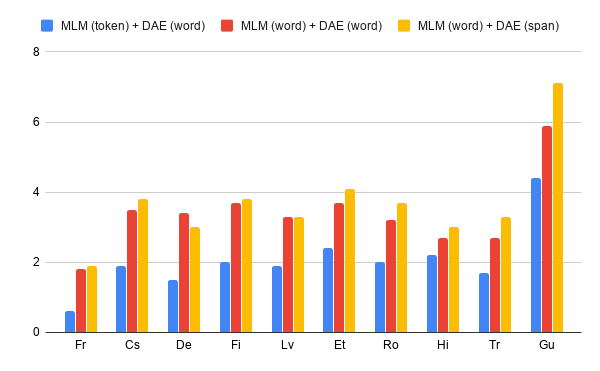Do Explicit Alignments Robustly Improve Multilingual Encoders?
Shijie Wu, Mark Dredze
Machine Translation and Multilinguality Short Paper

You can open the pre-recorded video in a separate window.
Abstract:
Multilingual BERT (mBERT), XLM-RoBERTa (XLMR) and other unsupervised multilingual encoders can effectively learn cross-lingual representation. Explicit alignment objectives based on bitexts like Europarl or MultiUN have been shown to further improve these representations. However, word-level alignments are often suboptimal and such bitexts are unavailable for many languages. In this paper, we propose a new contrastive alignment objective that can better utilize such signal, and examine whether these previous alignment methods can be adapted to noisier sources of aligned data: a randomly sampled 1 million pair subset of the OPUS collection. Additionally, rather than report results on a single dataset with a single model run, we report the mean and standard derivation of multiple runs with different seeds, on four datasets and tasks. Our more extensive analysis finds that, while our new objective outperforms previous work, overall these methods do not improve performance with a more robust evaluation framework. Furthermore, the gains from using a better underlying model eclipse any benefits from alignment training. These negative results dictate more care in evaluating these methods and suggest limitations in applying explicit alignment objectives.
NOTE: Video may display a random order of authors.
Correct author list is at the top of this page.
Connected Papers in EMNLP2020
Similar Papers
LAReQA: Language-Agnostic Answer Retrieval from a Multilingual Pool
Uma Roy, Noah Constant, Rami Al-Rfou, Aditya Barua, Aaron Phillips, Yinfei Yang,

XL-WiC: A Multilingual Benchmark for Evaluating Semantic Contextualization
Alessandro Raganato, Tommaso Pasini, Jose Camacho-Collados, Mohammad Taher Pilehvar,

Multi-task Learning for Multilingual Neural Machine Translation
Yiren Wang, ChengXiang Zhai, Hany Hassan,

Pre-training Multilingual Neural Machine Translation by Leveraging Alignment Information
Zehui Lin, Xiao Pan, Mingxuan Wang, Xipeng Qiu, Jiangtao Feng, Hao Zhou, Lei Li,
